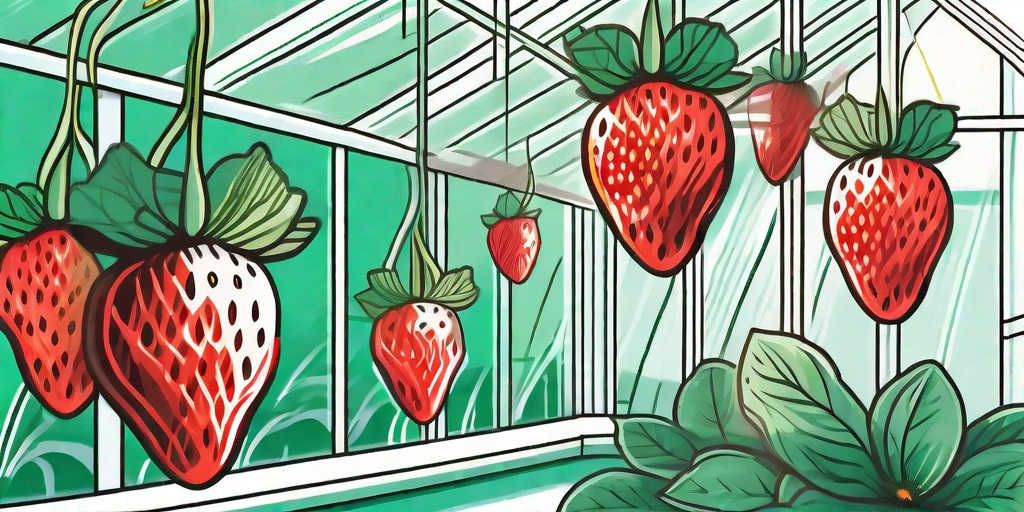
Strawberries are the quintessential summer fruit, a sweet and juicy treat that can make any day feel like a holiday. But why limit yourself to buying them from the store when you can grow them in your own greenhouse? With a bit of know-how, a dash of patience, and a sprinkle of love, you can cultivate your own crop of these delightful berries. And trust us, there's nothing quite like the taste of a strawberry you've grown yourself. It's like a burst of sunshine in your mouth!
The Basics of Strawberry Growing
Before we dive into the nitty-gritty of greenhouse strawberry cultivation, let's cover some basic strawberry facts. After all, knowledge is power, and the more you know about your future berry buddies, the better you can care for them.
Strawberries are perennials, which means they come back year after year. They prefer a sunny location and well-drained soil. They're also a bit picky about temperature: they need cold winters to go dormant and rejuvenate, but they don't like it too hot in the summer. That's where your greenhouse comes in handy!
Choosing Your Strawberry Variety
There are three main types of strawberries: June-bearing, everbearing, and day-neutral. June-bearing strawberries produce a big crop in early summer, everbearing strawberries produce several crops throughout the season, and day-neutral strawberries produce fruit all summer long. The choice is yours, depending on how much patience you have and how often you want to enjoy your homegrown strawberries.
Some popular varieties include 'Earliglow' and 'Honeoye' for June-bearing, 'Ozark Beauty' and 'Quinault' for everbearing, and 'Tribute' and 'Tristar' for day-neutral. Each variety has its own unique taste and growth habits, so feel free to experiment and find your favorite!
Setting Up Your Greenhouse
Now that you've chosen your strawberry variety, it's time to prepare your greenhouse. This is where the magic happens, folks. A well-prepared greenhouse can be the difference between a bountiful harvest and a disappointing crop.
Your greenhouse should have plenty of sunlight, good ventilation, and a temperature control system. Strawberries prefer a temperature between 60-80°F (15-27°C), so make sure your greenhouse can maintain this range. A good irrigation system is also essential, as strawberries need regular watering but don't like to sit in water.
Preparing the Soil
Strawberries prefer a slightly acidic soil with a pH between 5.5 and 6.5. You can test your soil's pH with a soil test kit and adjust it with lime or sulfur if necessary. The soil should also be rich in organic matter, so consider adding compost or well-rotted manure.
Make sure the soil is well-drained, as strawberries don't like wet feet. You can improve drainage by adding sand or perlite to the soil, or by planting your strawberries in raised beds or containers.
Planting and Caring for Your Strawberries
With your greenhouse set up and your soil prepared, it's time to plant your strawberries. This is where the real fun begins, folks. There's nothing quite like getting your hands dirty and nurturing your plants from tiny seedlings to fruit-bearing powerhouses.
Plant your strawberries in early spring, as soon as the soil can be worked. The plants should be spaced about 18-24 inches (45-60 cm) apart, with the rows about 3-4 feet (90-120 cm) apart. The crown of the plant (where the leaves emerge) should be level with the soil surface. Too deep and the crown could rot, too shallow and the roots could dry out.
Watering and Fertilizing
Strawberries need regular watering, especially during dry periods. However, avoid overwatering as this can lead to root rot. A good rule of thumb is to water when the top inch of soil is dry.
As for fertilizing, strawberries need a balanced fertilizer with equal amounts of nitrogen, phosphorus, and potassium. Apply the fertilizer in early spring when the plants start to grow, and again after the first harvest.
Pruning and Harvesting
Pruning is an important part of strawberry care. Remove any dead or diseased leaves and cut off the runners (long stems that produce new plants) to encourage the plant to focus on fruit production.
Harvest your strawberries when they are fully red and slightly soft to the touch. Be gentle when picking to avoid bruising the fruit. And remember, the best part of growing your own strawberries is eating them, so don't be shy to taste test!
Common Strawberry Problems and Solutions
Like any gardening endeavor, growing strawberries can come with its share of challenges. But don't worry, we've got you covered. Here are some common strawberry problems and their solutions.
Pests
Strawberries can be attacked by a variety of pests, including slugs, snails, aphids, and birds. To deter these critters, consider using organic pesticides, slug traps, insecticidal soaps, or bird netting.
Diseases
Strawberries can also be affected by various diseases, such as powdery mildew, leaf spot, and root rot. To prevent these diseases, ensure good air circulation, avoid overwatering, and rotate your crops every 3-4 years.
FAQs
- How long does it take for strawberries to grow in a greenhouse?
It depends on the variety, but generally, strawberries start to bear fruit about 4-6 weeks after planting.
- Can I grow strawberries all year round in a greenhouse?
Yes, with the right temperature control and lighting, you can grow strawberries all year round in a greenhouse.
- Do strawberries need a lot of sun?
Yes, strawberries need at least 6-8 hours of sunlight a day to produce fruit.
Conclusion
And there you have it, folks. With a bit of preparation, care, and patience, you can enjoy the sweet success of growing juicy strawberries in your own greenhouse. So why wait? Get your hands dirty, have some fun, and reap the fruits of your labor. Happy gardening!











